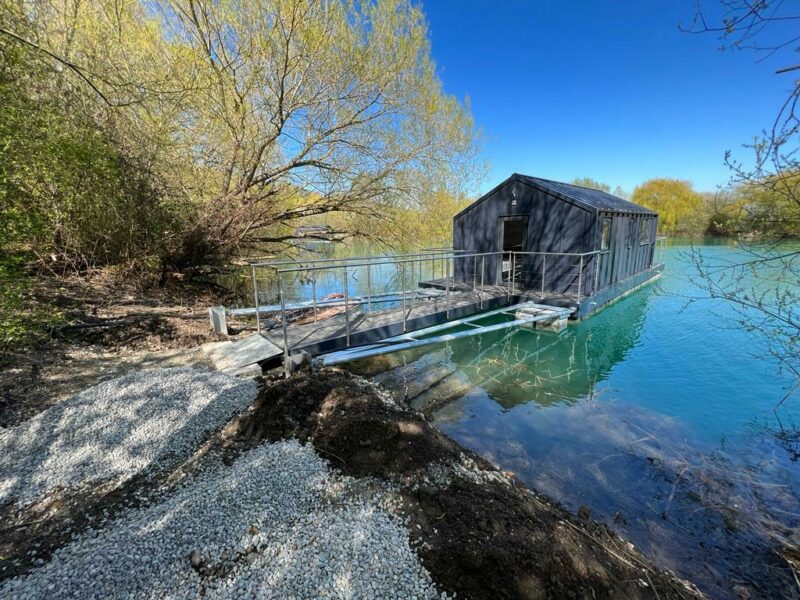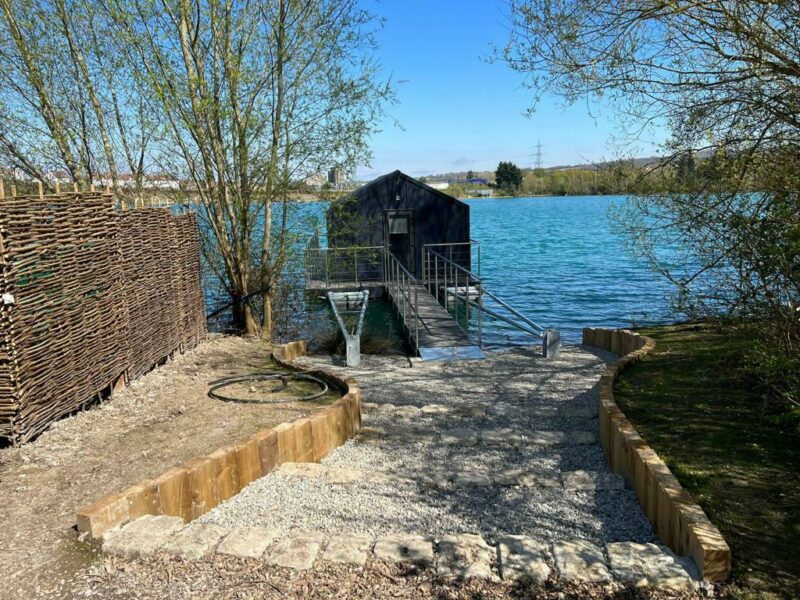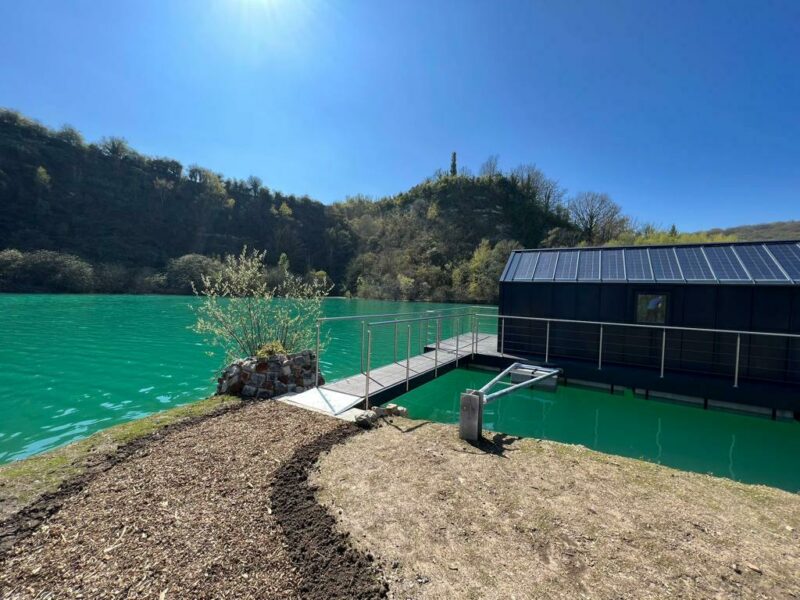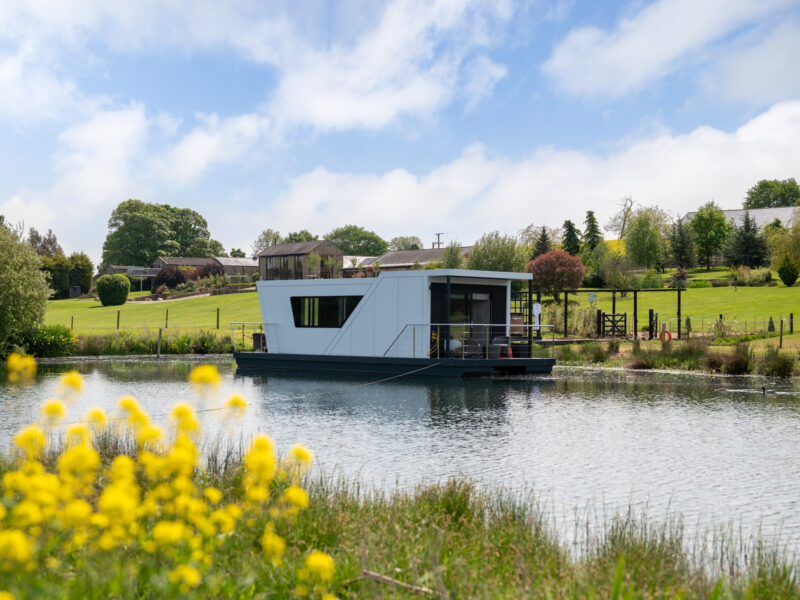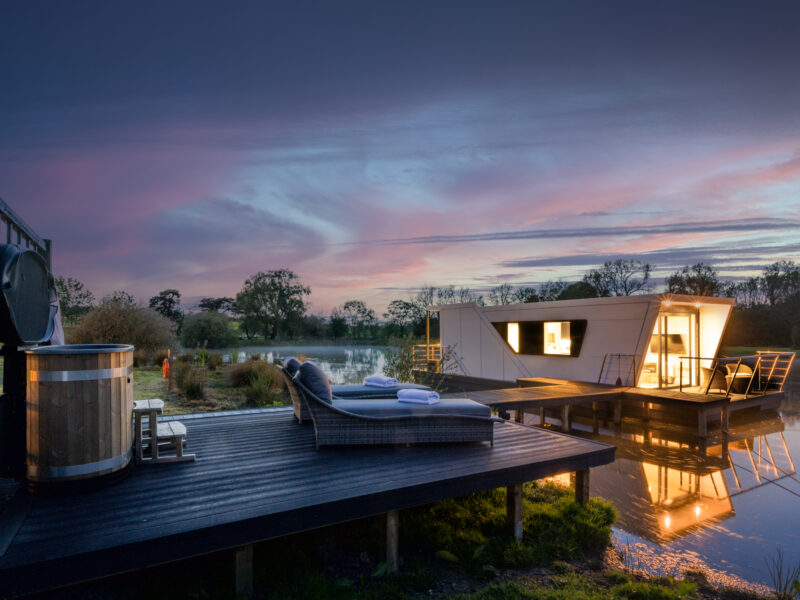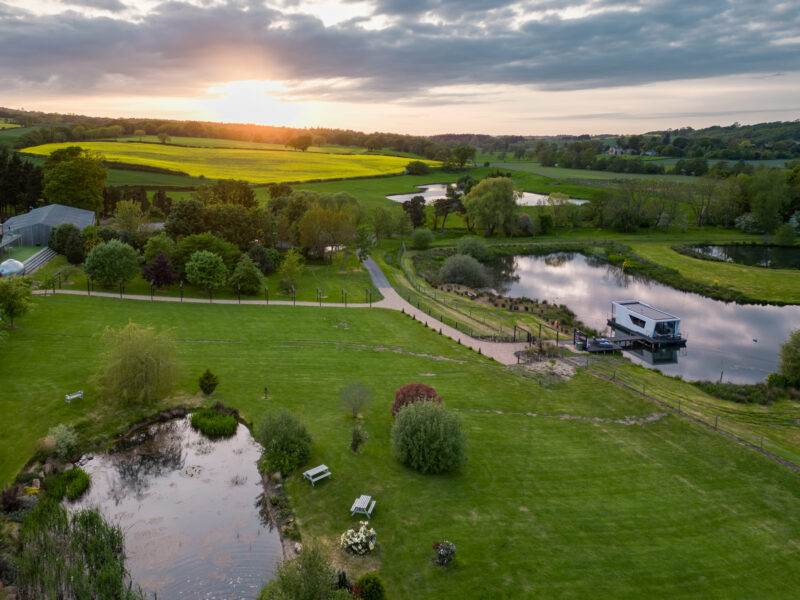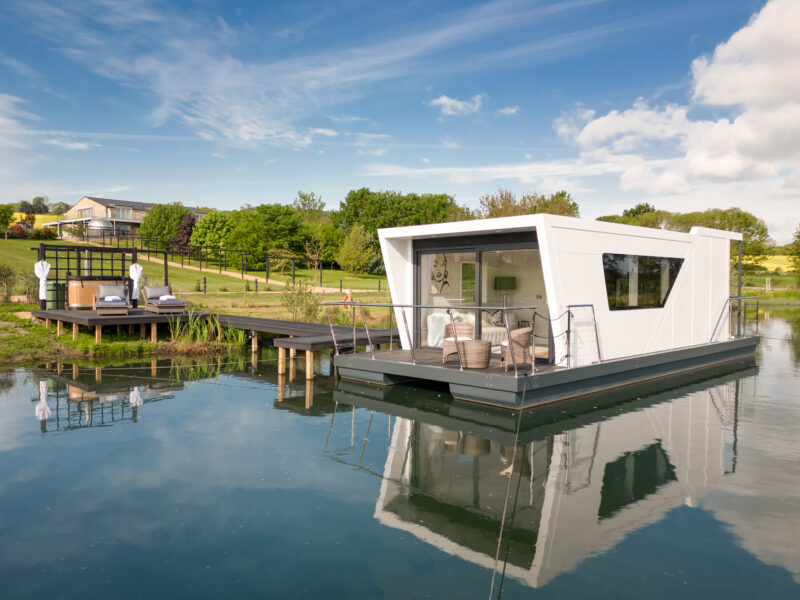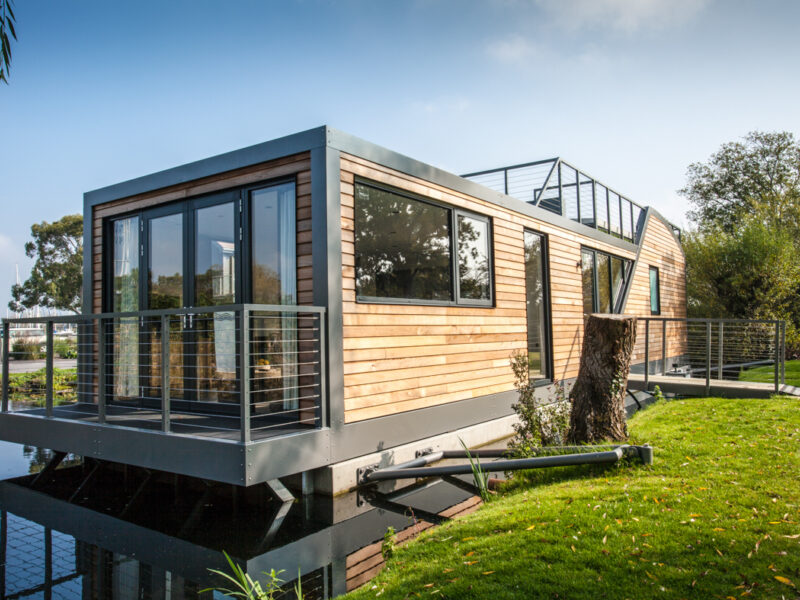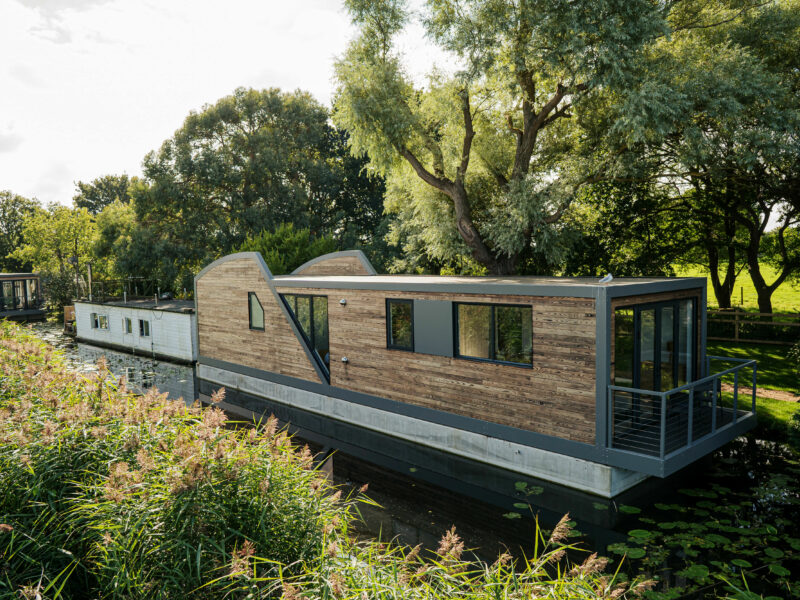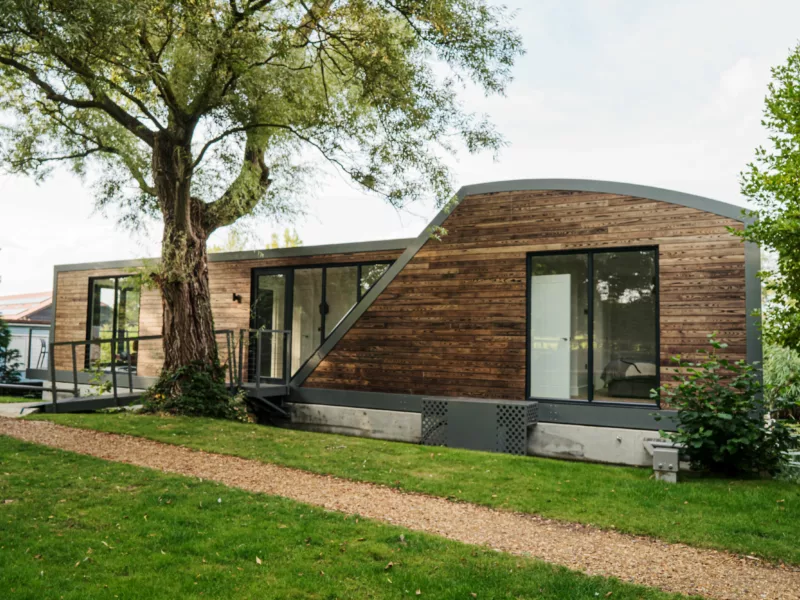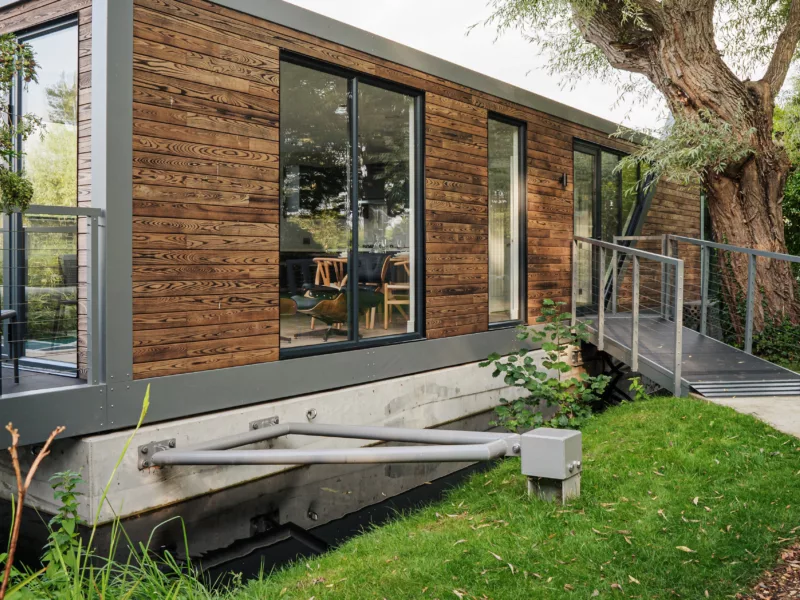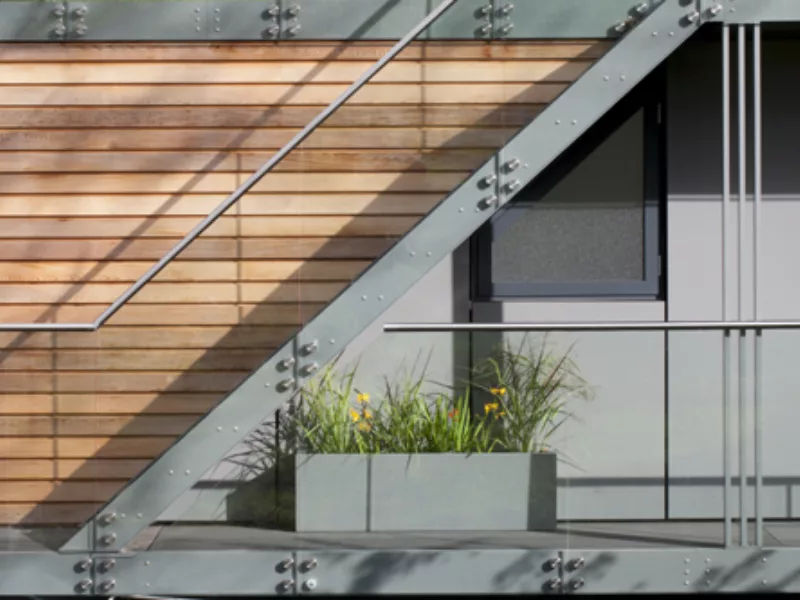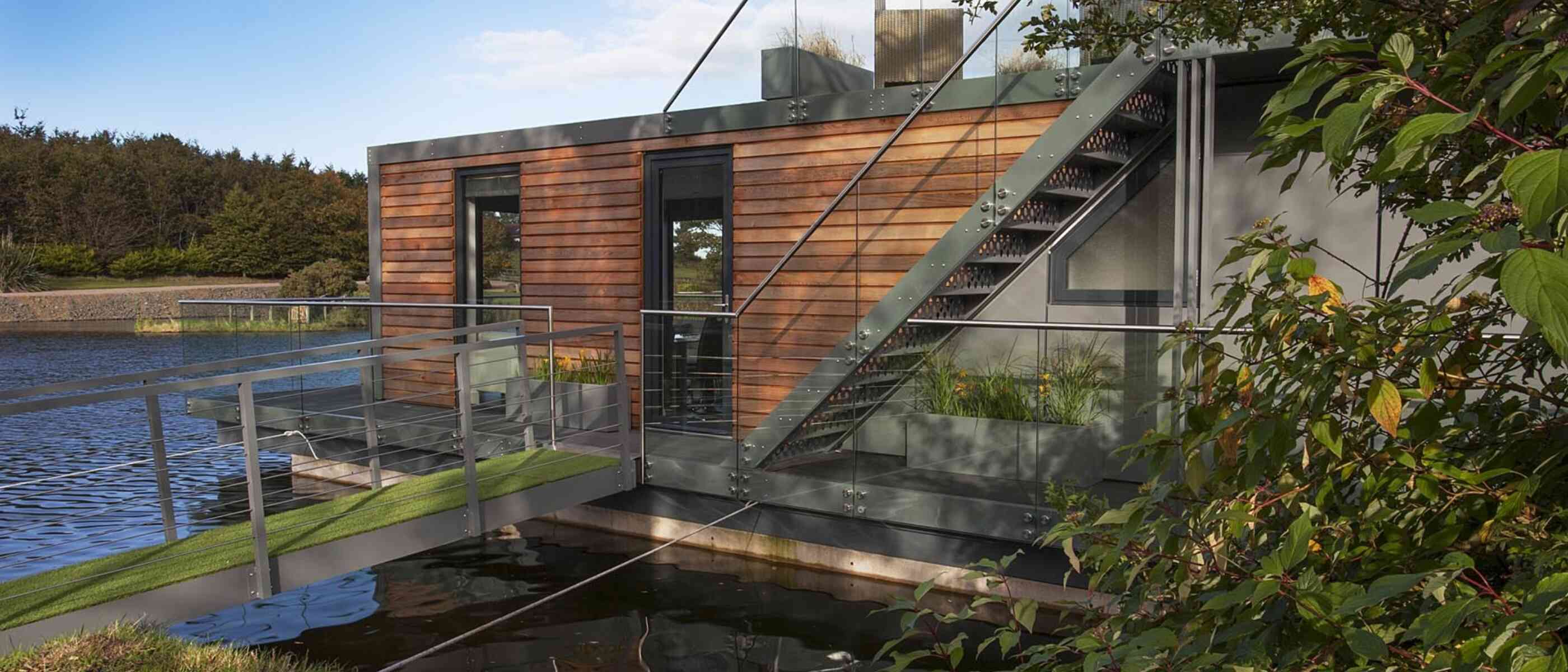
NAVIGATING A GREENER FUTURE: THE SUSTAINABILITY OF HOUSEBOATS
We now live in a age when environmental issues are a global concern and the need for alternative and sustainable housing solutions is increasing. Our range of houseboats, with their unique blend of innovation and adaptability, provide a viable solution for those eco-conscious individuals looking to embrace a life of living on water without compromise. Our houseboats are environmentally sustainable, have ecological benefits, are resource efficient, and offer the potential of a greener future.
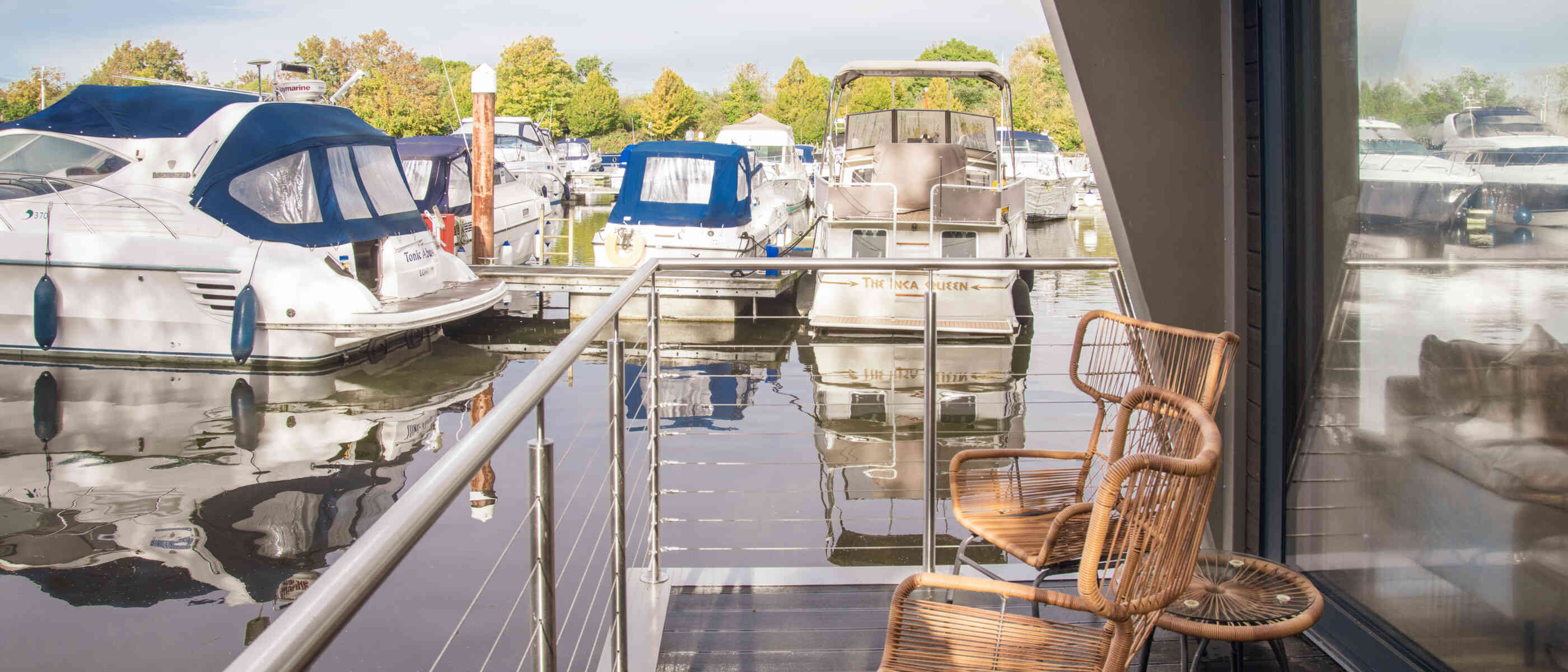
A Low-Impact Lifestyle
Houseboats offer a low-impact lifestyle and unlike traditional homes that require extensive land use and infrastructure development, houseboats are built on floating pontoons. This means our houseboats only lightly touch a site, reducing the environmental footprint as well as minimising the disturbance to ecosystems thus preserving natural habitats.
Renewable Energy Integration
Bluefield Houseboats offers renewable energy options with all our floating homes, such as solar panels which allows electricity to be generated in an environmentally friendly manner. The integration of off grid systems not only reduces dependence on traditional power sources but also contributes to a lower carbon footprint.
Water Conservation Practices
Living on one of our houseboats also encourages residents to consider water conservation practices. Our houseboat designs can include water collection and filtration systems. Rainwater harvesting, for example, can be used for various purposes from watering plants to flushing toilets, with collection tanks located on the bank. All these practices contribute to the conservation of water resources and create a greater awareness of sustainable living.
Reclaimed and Recyclable Materials:
At Bluefield Houseboats we endeavour, where possible, to use reclaimed and recyclable materials which contributes to reducing the demand for new resources and minimising waste. This in turn lessens the environmental impact as well as giving a unique character to each houseboat model and making it a distinctive and sustainable living space.
Community and Lifestyle:
Houseboats generate a sense of community living and increased environmental awareness where residents share a commitment to sustainable practices. They are more likely to work together on community gardens and waste reduction which all contributes to a more sustainable and resilient lifestyle.
Low carbon / Sustainable Design Features
Bluefield Houseboats also applies a "Fabric First" approach to all our houseboat designs. Fabric First focuses on energy-efficient building design by creating an airtight, well-insulated envelope in order to reduce heating needs. It prioritizes the performance of the building fabric, aiming for airtightness, superior insulation, and controlled ventilation. Mechanical Ventilation Heat Recovery (MVHR) systems provide fresh air while retaining heat. The insulation, U-values, double-glazed windows, and solar gain contribute to energy efficiency and thermal bridging, minimised through timber construction, prevents heat transfer. In essence, the Fabric First approach means we focus on optimising the building envelope for sustainability.
In conclusion, as the world tries to deal with the challenges of climate change and environmental issues, our sustainable houseboats offer a very real and viable solution. With their low-impact design, renewable energy integration, water conservation practices, adaptability and lower energy consumption, houseboats are moving towards net zero emissions in line with the UK government's Net Zero Strategy and they represent an attractive option for those seeking a more eco-friendly and greener way of living.

